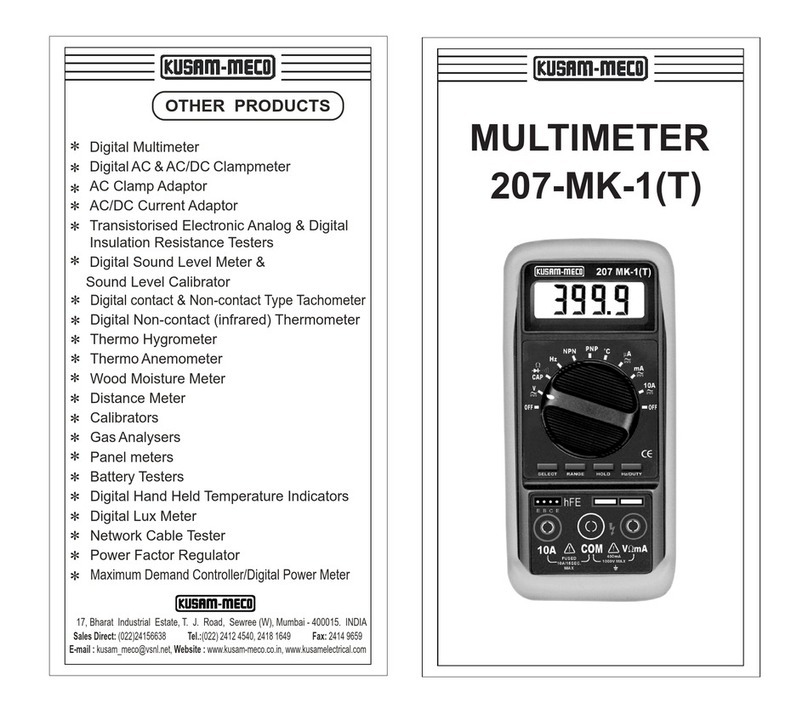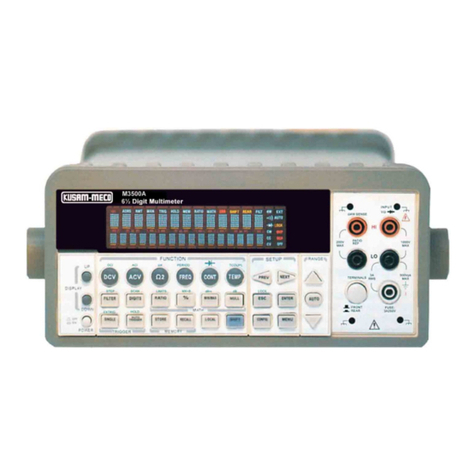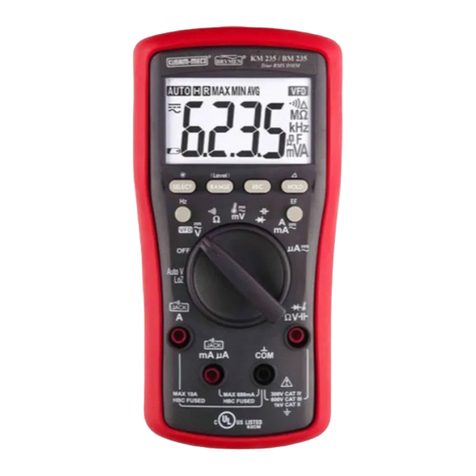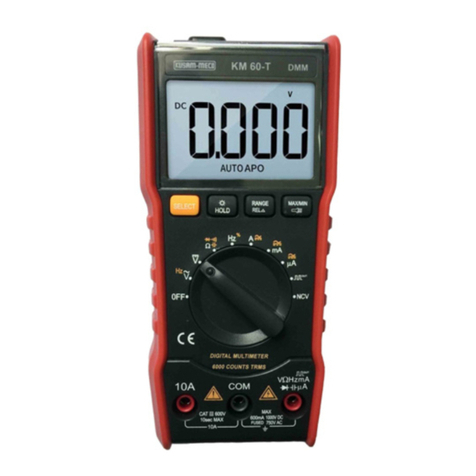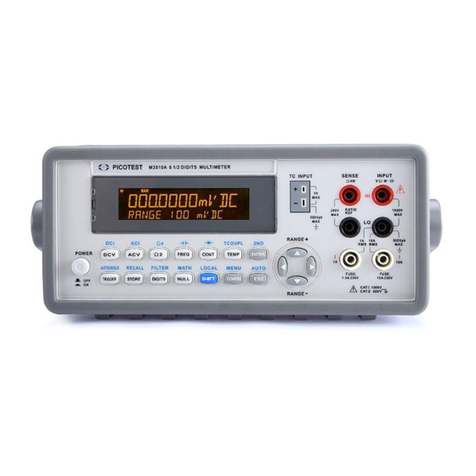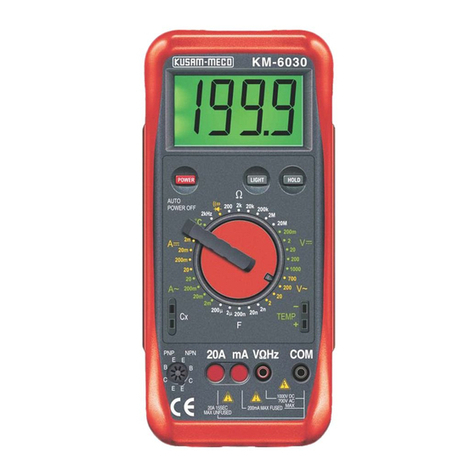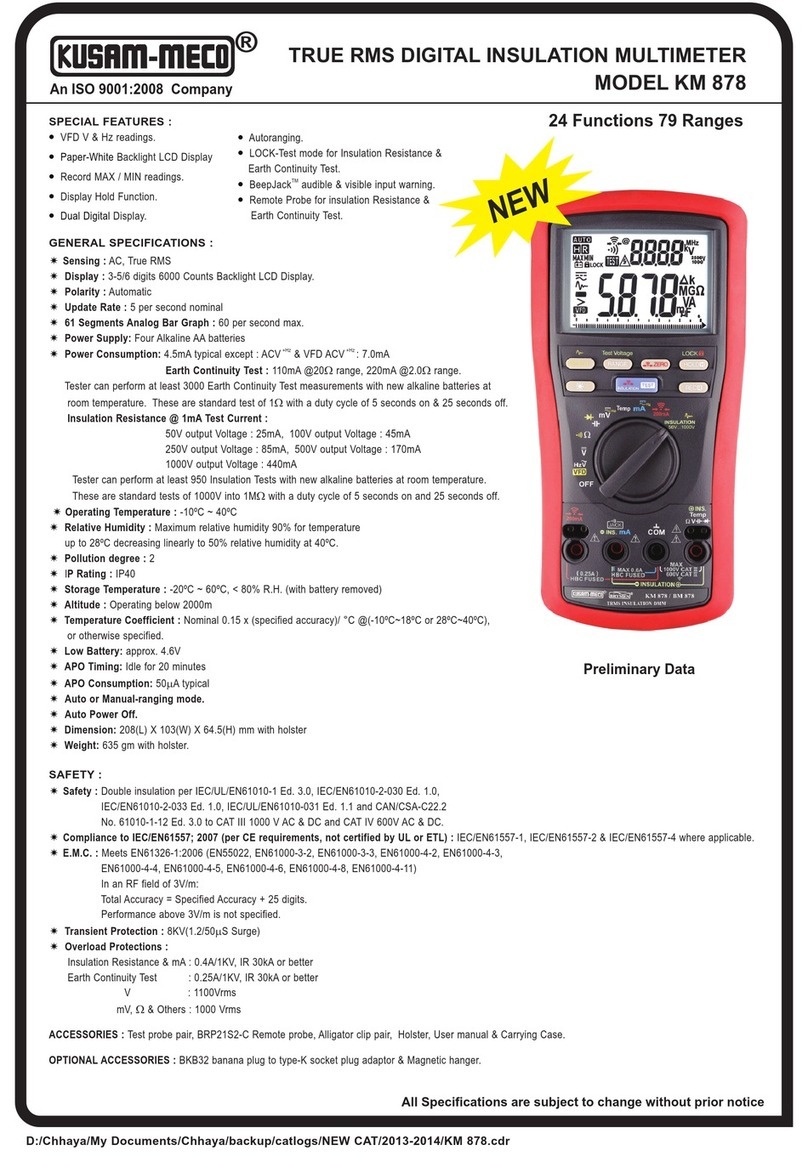Measurement Category II (CAT II) is for
measurements performed on circuits directly
connected to the low voltage installation. Examples
are measurements on household appliances,
portable tools and similar equipment
Measurement Category III (CAT III) is for
measurements performed in the building
installation. Examples are measurements on
distribution boards, circuit-breakers, wiring,
including cables, bus-bars, junction boxes,
switches, socket-outlets in the fixed installation, and
equipment for industrial use and some other
equipment, for example, stationary motors with
permanent connection to the fixed installation.
Measurement Category IV (CAT IV) is for
measurements performed at the source of the low-
voltage installation. Examples are electricity meters
and measurement on primary overcurrent
protection devices and ripple control units.
Per IEC61010-1 2nd Ed. (2001) Measurement
Category
2
To reduce the risk of fire or electric shock, do not
expose this product to rain or moisture. To avoid
electrical shock hazard, observe the proper safety
precautions when working with voltage above
60 VDC or 30 VAC rms. These voltage levels pose
a potential shock hazard to the user. Do not touch
test lead tips or the circuit being tested while power
is applied to the circuit being measured. Keep your
fingers behind the finger guards of the test leads
during measurement. Inspect test leads,
connectors, and probes for damaged insulation or
exposed metal before using the instrument. If any
defects are found, replace them immediately. Do
not measure any current that exceeds the current
rating of the protection fuse. Do not attempt a
current measurement to any circuit where the open
circuit voltage is above the protection fuse voltage
rating. Suspected open circuit voltage should be
checked with voltage functions. Never attempt a
voltage measurement with the test lead inserted
into the mA/mA or A input jack. Only replace the
blown fuse with the proper rating as specified in
this manual.
Disconnect the test leads from the test points
before changing functions. Always set the
instrument to the highest range and work
downward for an unknown value when using
manual ranging mode.
Warning
CAUTION
3


